Full name Graeme Obree Rider type Time Trial Specialist Nickname Flying Scotsman Name Graeme Obree | Current team Fullarton Wheelers Role Cyclist Discipline Road and track Spouse Anne Obree | |
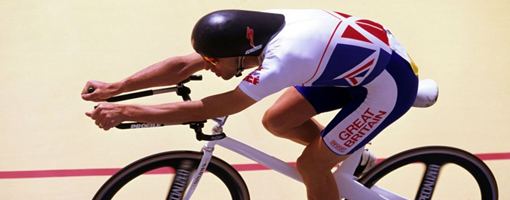 | ||
Born | ||
Graeme obree on the obree way in conversation with richard moore
Graeme Obree (born 11 September 1965), nicknamed The Flying Scotsman, is a Scottish racing cyclist who twice broke the world hour record, in July 1993 and April 1994, and was the individual pursuit world champion in 1993 and 1995. He was known for his unusual riding positions and for the Old Faithful bicycle he built which included parts from a washing machine. He joined a professional team in France but was fired before his first race.
Contents
- Graeme obree on the obree way in conversation with richard moore
- Building a record bike from recycled parts graeme obree
- Origins
- The bike
- Taking the record
- Losing the record
- Regaining the record
- Old Faithful banned
- Other achievements
- Professional career
- Attitude to doping
- Further suicide attempt
- Present day
- New Hour record attempt
- Human Powered Vehicle land speed record
- Book and films
- Related media
- References
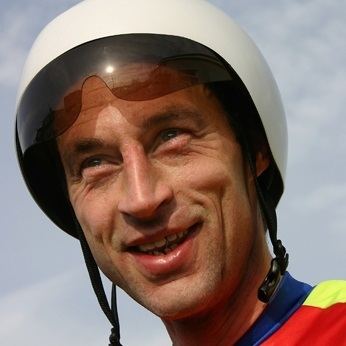
He suffers from bipolar disorder and has attempted suicide three times. His life and exploits have been dramatised in the 2006 film The Flying Scotsman and more recently in the documentary film Battle Mountain: Graeme Obree's Story, which follows his journey to Battle Mountain, Nevada to compete in the 2013 World Human Powered Speed Championships. Obree has created some radical innovations in bicycle design but has had problems with the cycling authorities banning the riding positions his designs required.
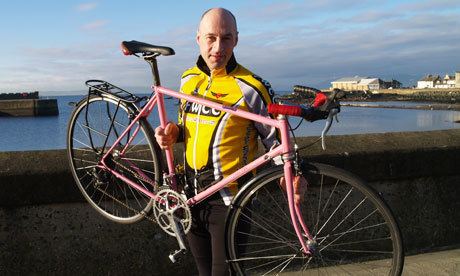
In March 2010 he was inducted into the Scottish Sports Hall of Fame.

Building a record bike from recycled parts graeme obree
Origins
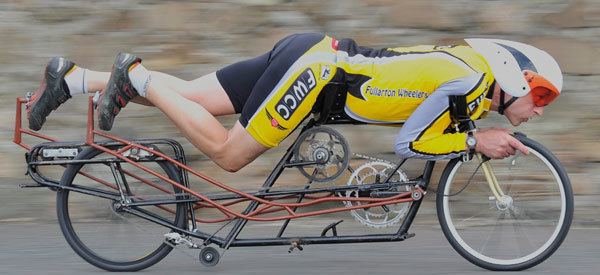
Obree was born in Nuneaton, Warwickshire but has lived almost all his life in Scotland and considers himself Scottish. An individual time triallist, his first race was a 10-mile time trial to which he turned up wearing shorts, anorak and Doc Marten boots. He thought the start and finish were at the same place and stopped where he had started, 100 metres short of the end. He had started to change his clothes when officials told him to continue. He still finished in "about 30 minutes."
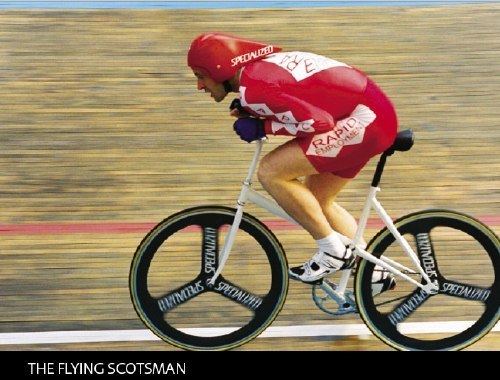
Obree suffers from bipolar disorder. He attempted suicide in his teens by gassing himself. He was saved by his father, who had returned early from work. In the 1990s he took an overdose of aspirin washed down by water from a puddle. He had personality problems, sniffed the gas he used to weld bicycles, and was being chased for £492 owed in college fees.
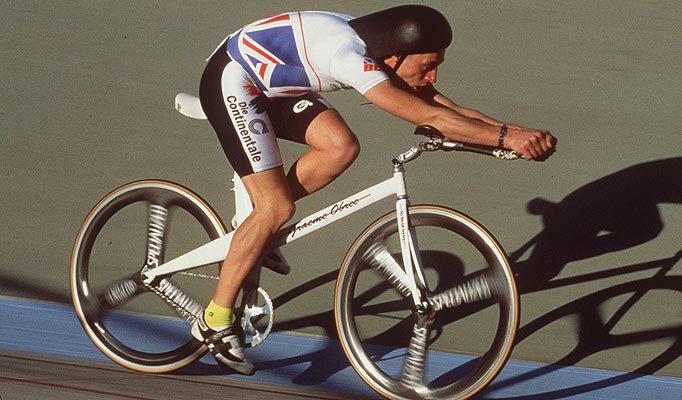
The bike shop that he ran failed and he decided the way out of his problems was to attack the world hour velodrome record. It had been held for nine years by Francesco Moser, at 51.151 kilometres. Obree said:
The record had fascinated me since Moser broke it. It was the ultimate test – no traffic, one man in a velodrome against the clock. I didn't tell myself that I will attempt the record, I said I would break it. When your back is against the wall, you can say it's bad or you can say: 'I'll go for it.' I decided, that's it, I've as good as broken the record.The bike
Obree had built frames for his bike shop and made another for his record attempt. Instead of traditional dropped handlebars it had straight bars like those of a mountain bike. He placed them closer to the saddle than usual and rode with the bars under his chest, his elbows bent and tucked into his sides like those of a skier. Watching a washing machine spin at 1,200rpm led him to take the bearings, which he assumed must be of superior quality, and fit them to his bike. Obree later regretted admitting to the bearings experiment, because journalists referred to that before his achievements and other innovations.
Obree called his bike "Old Faithful". It has a narrow bottom bracket, around which the cranks revolve, to bring his legs closer together, as he thought this is the "natural" position. As shown in the film, he thought a tread of "one banana" would be ideal. The bike has no top tube, so that his knees did not hit the frame. The chainstays are not horizontal to the ground. Thus the cranks can pass with a narrow bottom bracket. The fork had only one blade, carefully shaped to be as narrow as possible. A French writer who tried it said the narrow handlebars made it hard to accelerate the machine in a straight line but, once it was at speed, he could hold the bars and get into Obree's tucked style.
At a high enough speed, [I could] tuck in my arms. And, above all, get in a very forward position on the bike, on the peak of the saddle. The Obree position isn't advantageous simply aerodynamically, it also allows, by pushing the point of pedalling towards the rear, to benefit from greater pressure while remaining in the saddle. You soon get an impression of speed, all the greater because you've got practically nothing [deux fois rien] between your hands. Two other things I noticed after a few hundred metres: I certainly didn't have the impression of turning 53 × 13, and the Obree position is no obstruction to breathing. But I wasn't pedalling at 55kmh, 100 turns of the pedals a minute, yet my arms already hurt.Taking the record
Obree attacked Moser's record, on 16 July 1993, at the Vikingskipet velodrome in Norway. He failed by nearly a kilometre. He had booked the track for 24 hours and decided to come back the next day. The writer Nicholas Roe said:
To stop his aching body seizing up, Obree then took the unusual measure of drinking pint upon pint of water so that he had to wake up to go to the lavatory every couple of hours through the night. Each time he got up, he stretched his muscles. On the next weary day, he was up and out within minutes, at the deserted velodrome by 7:55 am and on the track ready to start just five minutes after that. He had barely slept. He had punished his body hugely the previous day. Surely this was a waste of time?Obree said:
I was Butch Cassidy in terms of swagger. I didn't want any negativity. This was blitzkrieg. I'm going in there. Let me do it. I'm not going to be the timorous guy from Scotland. That's what the difference was. Purely mental state. The day before, I had been a mouse. Now I was a lion.On 17 July 1993, Obree set a new record of 51.596 kilometres, beating Moser's record of 51.151 kilometres by 445 metres.
Losing the record
Obree's triumph lasted less than a week. On 23 July 1993, the British Olympic champion, Chris Boardman broke Obree's record by 674 metres, riding 52.270 km at Bordeaux during the rest day of the Tour de France. His bike had a carbon monocoque frame, carbon wheels, and a triathlon handlebar. Their rivalry grew: a few months later Obree knocked Boardman out of the world championship pursuit to take the title himself.
Regaining the record
Francesco Moser, whose record Obree had beaten, adopted Obree's riding position—adding a chest pad—and established not an outright world record but a veterans' record of 51.84 kilometres. He did it on 15 January 1994, riding in the thin air of Mexico City as he had for his outright record, whereas Obree and Boardman had ridden at close to sea level.
Obree retook the record on 27 April 1994, using the track that Boardman had used at Bordeaux. He had bolted his shoes to his pedals, to avoid what had happened in the final of the national pursuit championship, when he pulled his foot off the pedal during his starting effort.
He rode 52.713 kilometres, a distance beaten on 2 September 1994 by the Spanish Tour de France winner, Miguel Indurain.
Old Faithful banned
The world governing body, the Union Cycliste Internationale, grew concerned that changes to bicycles were making a disproportionate improvement to track records. Among other measures, it banned his riding position: he did not find out until one hour before he began the world championship pursuit in Italy. Judges disqualified him when he refused to comply. The magazine Cycling Weekly blamed "petty-minded officialdom."
Obree developed another riding position, the "Superman" style, his arms fully extended in front, and he won the individual pursuit at the world championships with this and Old Faithful in 1995. That position was also banned. However, in May 2014 the UCI relented, acknowledging that fixing the kind of equipment to be used was hindering technical progress. It restored previous banned world records, from 2000, now to be described as 'Best hour performance'.
The original Old Faithful bike is on display at the National Museum of Scotland in Edinburgh, while two near-replicas built for use in the Flying Scotsman film are displayed in the Riverside Transport Museum in Glasgow.
Other achievements
Obree was individual pursuit world champion in 1993 and 1995. He broke the British 10-mile individual time trial record in 1993, won the RTTC 50-mile championship the same year (a record 1h 39m 1s), and won the 25-mile championship in 1996. In 1997 he joined forces with coach Joe Beer and clocked 18m 36s in a 10-mile time trial (V718 Hull) and next day won the British Cycling Federation 25-mile championship - this was part of building towards an hour record attempt that was to be eventually shelved.
The writer Peter Bryan, of The Times, said:
To see Obree in full flight, shoulders hunched and elbows tucked into his ribs, is a memorable sight. His face contorted with pain illustrates the effort he is putting in. And yet, not too many minutes after he has finished a ride the champion is sufficiently relaxed to talk with a queue of pressmen.
Professional career
Obree rode his hour records as an amateur. He took a professional licence after winning his first world championship, telling Bryan: "I reckon I can make more money on the bike than I get from unemployment benefit."
He joined Le Groupement (fr), a French team but did not attend a meeting in Les Carroz d'Arâches (fr) and was fired for "lack of professionalism." Obree had been racing in Florida when the team first met. But he was on holiday there when the team met again for publicity photographs. He got to the next get-together but flew to Paris instead of Lille, where the meeting was held.
The team manager, Patrick Valcke, said:
"If a rider has that attitude, it's best to stop working together as soon as possible. We paid for his tickets [to fly from Glasgow to Geneva] and he didn't even turn up, didn't even phone to explain why he was not coming. He said that he did not want to leave his family so soon after the death of his brother (see below) but he could have phoned to tell us that. I don't want any more to do with him."Obree said: "I was too ill to attend the get-together and had no success when I attempted to contact team officials on 1 January. My wife, Anne, who is a nurse, insisted I was not well enough to travel to France."
The Le Groupement team fell apart after a short time, when the sponsoring company was involved in scandal, with accusations that it was nothing but a pyramid selling scheme. Some of the team members claimed that they were owed money, and their wages had not been paid.
Attitude to doping
Obree said of his short professional career:
"I still feel I was robbed of part of my career. I was signed up to ride in the prologue of the Tour back in 1995, but it was made very obvious to me I would have to take drugs. I said no, no way, and I was sacked by my team. So there I was, 11 years later, sitting there waiting for the Tour cyclists to come by, and something welled up in me. I feel I was robbed by a lot of these bastards taking drugs. I also hate the way that people think anyone who has ever achieved anything on a bike must have been taking drugs. I was surprised how resentful I felt when I was in Paris. It had obviously been simmering away in there for years. That's something new I'll have to talk to my therapist about."In 1996, he told the magazine L'Équipe:
"In my opinion, 99 percent of riders at élite level take EPO or a similar drug, not particularly to dope themselves but to be at the same level as the others. And that's rather sad."His web site says:
"AND by the way, I never took drugs to improve my performance at any time as has been happening in the sport for a long time. I will be willing to stick my finger into a polygraph test if anyone with big media pull wants to take issue. In other words, if you buy a signed poster now it will not be tarnished later."Further suicide attempt
Obree's brother, Gordon, died in a car crash in October 1994, and Graeme Obree again slid in and out of depression. In 2001 he was found unconscious at Bellsland Farm in Kilmaurs, 12 km from his Ayrshire home. The Obree family horse was stabled there, and he was discovered by a woman checking a barn. He had tried to hang himself. His wife, Anne, said he had been diagnosed as having severe bipolar disorder three years earlier.
Present day
Obree is divorced from his wife, with whom he has two children. He continues to race occasionally in individual time trials for Ayrshire-based Fullarton Wheelers cycling club. In May 2005, he crashed in the rain in the national 10-mile time trial championship near Nantwich in Cheshire. He was a member of the winning three-man club squad that took the team title in the Scottish 10-mile championship in May 2006. In December 2006, he competed in the track event, Revolution 15, in a four kilometre pursuit challenge.
In January 2011, Obree disclosed in an interview with the Scottish Sun that he is gay and that his difficulty with coming to terms with his sexual orientation contributed to his earlier suicide attempts. "I was brought up by a war generation; they grew up when gay people were put in jail. Being homosexual was so unthinkable that you just wouldn't be gay. I'd no inkling about anything, I just closed down." He came out to his family in 2005.
New Hour record attempt
In May 2009, Obree announced that he would make an attempt at the "Athlete's Hour" record on a bike he had built himself during 2009. Obree said in October 2009 that the attempt had been cancelled as the bike he'd built himself was not suitable for the conditions. He will not be attempting this again.
In December 2009, he was inducted into the British Cycling Hall of Fame. while in March 2010, he was inducted into the Scottish Sports Hall of Fame.
Human-Powered Vehicle land speed record
In December 2011, Obree announced that he would make an attempt at the human-powered vehicle (HPV) land speed record, hoping to hit 100 mph. In May 2012, he revealed that the bike he is building for this attempt is a prone bike. The attempt was originally to take place in Britain, and the record speed was then 82.8 miles per hour (133.3 km/h). However, he competed in the 2013 World Human Powered Speed Championships in Battle Mountain, Nevada, where the record was also set. He achieved a speed of 56.62 miles per hour (91.12 km/h) on the morning of Friday, 13 September. While Obree did not break the HPV land speed record, he did set a new record for a rider in the prone position. The previous day, Obree had set a speed of 52.9 miles per hour (85.1 km/h), which was a record speed in the prone position on a two-wheeled HPV (the overall prone record being held by a trike).
Book and films
He published his autobiography in 2003 titled The Flying Scotsman. He said: "It started with the psychologist saying it would do me good and ended up as my life story." A film based on the book premiered at the Edinburgh International Film Festival in 2006, starring Jonny Lee Miller and Billy Boyd. In November 2006 Metro-Goldwyn Mayer bought world distribution rights and the film was released in the US on 29 December 2006; it was given a UK release on 29 June 2007. The DVD was released in the UK on 5 November 2007.
Battle Mountain: Graeme Obree's Story, a documentary film about Obree's appearance at the 2013 World Human Powered Speed Championships in Battle Mountain, Nevada, premiered at the 2015 Edinburgh International Film Festival. The film, directed by David Street with music by Alun Woodward of Chemikal Underground, went on public release on 21 March 2016, with a tour of cinemas featuring a question-and-answer session with Obree following screenings. The film was crowdfunded through the Kickstarter website.
